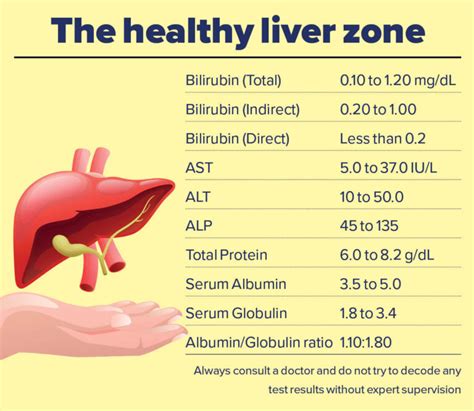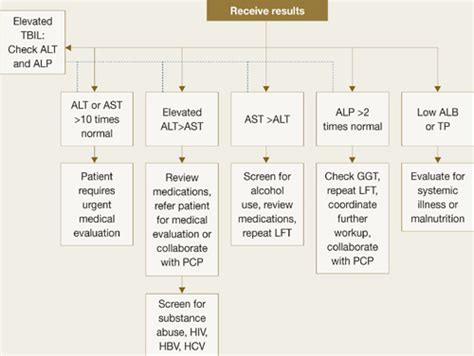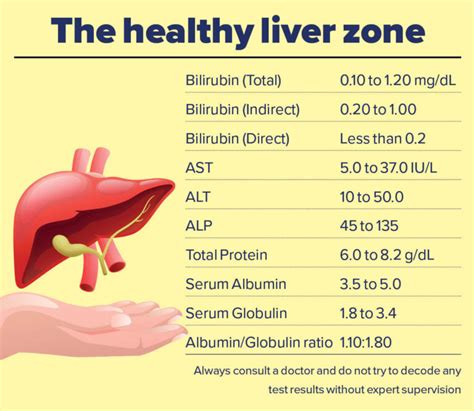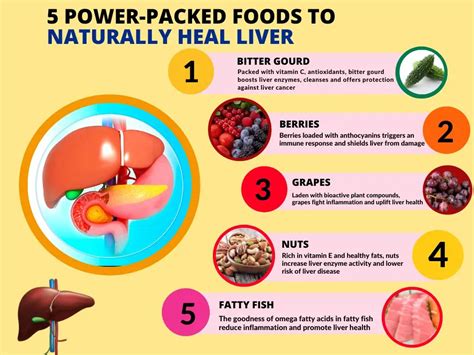Intro
Understand liver function blood test results, including bilirubin, ALT, and AST levels, to diagnose liver health issues like cirrhosis, fatty liver, and hepatitis, and learn how to interpret abnormal results.
The liver is a vital organ that plays a crucial role in maintaining our overall health. It is responsible for filtering toxins, regulating blood sugar levels, and producing essential proteins. A liver function blood test is a common diagnostic tool used to assess the health of the liver. The test measures various enzymes and proteins in the blood to determine if the liver is functioning properly. Understanding liver function blood test results is essential for identifying potential liver problems and taking prompt action to prevent further damage.
Liver function blood tests are often performed as part of a routine health check-up or when symptoms such as jaundice, fatigue, or abdominal pain are present. The test results can help diagnose a range of liver conditions, including hepatitis, cirrhosis, and liver cancer. It is essential to understand the different components of the liver function test and what the results mean. This knowledge can help individuals take proactive steps to protect their liver health and prevent complications.
The liver function test typically includes several components, including alanine transaminase (ALT), aspartate transaminase (AST), alkaline phosphatase (ALP), gamma-glutamyl transferase (GGT), and bilirubin. Each of these components provides valuable information about the liver's health. Elevated levels of these enzymes and proteins can indicate liver damage or disease. In this article, we will delve into the details of liver function blood test results, exploring what the different components mean and how to interpret the results.
Liver Function Test Components

The liver function test includes several components, each measuring different enzymes and proteins in the blood. These components are:
- Alanine transaminase (ALT): an enzyme found primarily in the liver, with smaller amounts in the kidneys, heart, and muscles.
- Aspartate transaminase (AST): an enzyme found in the liver, heart, and muscles.
- Alkaline phosphatase (ALP): an enzyme found in the liver, bones, and bile ducts.
- Gamma-glutamyl transferase (GGT): an enzyme found in the liver, bile ducts, and kidneys.
- Bilirubin: a yellow pigment produced during the breakdown of red blood cells.
Understanding ALT and AST Results
ALT and AST are two of the most important components of the liver function test. Elevated levels of these enzymes can indicate liver damage or disease. The normal range for ALT and AST varies slightly depending on the laboratory, but generally, the normal range is: * ALT: 0-40 U/L * AST: 0-40 U/LElevated levels of ALT and AST can indicate liver damage or disease, such as hepatitis or cirrhosis. The level of elevation can provide clues about the severity of the condition. For example, mildly elevated levels may indicate a mild case of hepatitis, while significantly elevated levels may indicate more severe liver damage.
Interpreting ALP and GGT Results

ALP and GGT are two other important components of the liver function test. Elevated levels of these enzymes can indicate liver damage or disease, particularly in the bile ducts. The normal range for ALP and GGT varies slightly depending on the laboratory, but generally, the normal range is:
- ALP: 30-120 U/L
- GGT: 0-55 U/L
Elevated levels of ALP and GGT can indicate liver damage or disease, such as bile duct obstruction or liver cancer. The level of elevation can provide clues about the severity of the condition. For example, mildly elevated levels may indicate a mild case of bile duct obstruction, while significantly elevated levels may indicate more severe liver damage.
Understanding Bilirubin Results
Bilirubin is a yellow pigment produced during the breakdown of red blood cells. Elevated levels of bilirubin can indicate liver damage or disease, particularly in the liver's ability to process bilirubin. The normal range for bilirubin varies slightly depending on the laboratory, but generally, the normal range is: * Total bilirubin: 0.1-1.2 mg/dL * Direct bilirubin: 0.0-0.3 mg/dL * Indirect bilirubin: 0.1-0.9 mg/dLElevated levels of bilirubin can indicate liver damage or disease, such as hepatitis or cirrhosis. The level of elevation can provide clues about the severity of the condition. For example, mildly elevated levels may indicate a mild case of hepatitis, while significantly elevated levels may indicate more severe liver damage.
Liver Function Test Results: What Do They Mean?

Interpreting liver function test results can be complex, and it is essential to consult with a healthcare professional to understand the results. The results can indicate a range of conditions, from mild liver damage to severe liver disease. The following are some possible interpretations of liver function test results:
- Normal results: indicate that the liver is functioning properly.
- Elevated ALT and AST: indicate liver damage or disease, such as hepatitis or cirrhosis.
- Elevated ALP and GGT: indicate liver damage or disease, particularly in the bile ducts.
- Elevated bilirubin: indicate liver damage or disease, particularly in the liver's ability to process bilirubin.
Common Liver Conditions Diagnosed with Liver Function Tests
Liver function tests are commonly used to diagnose a range of liver conditions, including: * Hepatitis: inflammation of the liver, often caused by viral infections. * Cirrhosis: scarring of the liver, often caused by chronic liver damage. * Liver cancer: cancer that develops in the liver. * Bile duct obstruction: blockage of the bile ducts, often caused by gallstones or tumors. * Fatty liver disease: buildup of fat in the liver, often caused by obesity or diabetes.Liver Health: Tips for Maintaining a Healthy Liver

Maintaining a healthy liver is essential for overall health. The following are some tips for maintaining a healthy liver:
- Eat a balanced diet: focus on whole, unprocessed foods, such as fruits, vegetables, and whole grains.
- Stay hydrated: drink plenty of water to help flush toxins from the liver.
- Exercise regularly: regular exercise can help improve liver function and reduce the risk of liver disease.
- Avoid excessive alcohol consumption: excessive alcohol consumption can damage the liver and increase the risk of liver disease.
- Get vaccinated: get vaccinated against hepatitis A and B to reduce the risk of liver disease.
What to Do If You Have Abnormal Liver Function Test Results
If you have abnormal liver function test results, it is essential to consult with a healthcare professional to determine the cause and develop a treatment plan. The following are some possible steps: * Repeat the test: to confirm the results and rule out any errors. * Undergo further testing: such as imaging tests or liver biopsy, to determine the cause of the abnormal results. * Make lifestyle changes: such as eating a healthy diet, exercising regularly, and avoiding excessive alcohol consumption. * Take medication: to treat underlying conditions, such as hepatitis or cirrhosis.Conclusion and Next Steps

In conclusion, liver function blood test results are an essential diagnostic tool for assessing liver health. Understanding the different components of the test and what the results mean is crucial for identifying potential liver problems and taking prompt action to prevent further damage. By maintaining a healthy lifestyle, getting regular check-ups, and following the tips outlined in this article, individuals can reduce their risk of liver disease and maintain optimal liver health.
We invite you to share your thoughts and experiences with liver function tests in the comments section below. If you have any questions or concerns, please do not hesitate to reach out to us. We are committed to providing you with accurate and helpful information to support your health and well-being.
What is a liver function test?
+A liver function test is a blood test that measures various enzymes and proteins in the blood to assess the health of the liver.
What do elevated ALT and AST levels indicate?
+Elevated ALT and AST levels can indicate liver damage or disease, such as hepatitis or cirrhosis.
How can I maintain a healthy liver?
+Maintaining a healthy liver involves eating a balanced diet, staying hydrated, exercising regularly, avoiding excessive alcohol consumption, and getting vaccinated against hepatitis A and B.
